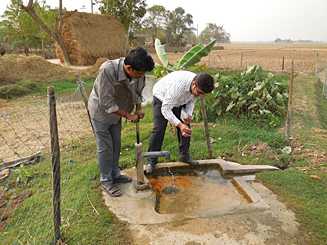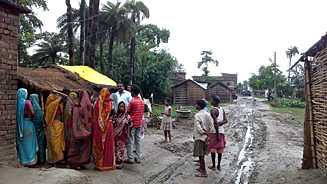Global Disease Detection Program: India

Collecting a water supply sample from a house during an acute gastroenteritis outbreak investigation.
The U.S. Centers for Disease Control and Prevention (CDC) collaborates with the government of India to address priority public health burdens in the region, from measles and mumps to avian flu. In 2009, the India Global Disease Detection (GDD) Regional Center was established. The focus of the GDD Center, located at India’s National Centre for Disease Control, is to establish the India Epidemic Intelligence Service (EIS) and to work with local, regional, and global public health entities to better detect, identify, and contain emerging infectious disease threats.
Responding to Health Threats
The Center recently collaborated with the U.S. CDC on several encephalopathy outbreaks in the Muzzafarpur district of Bihar state. These outbreak investigations resulted in multiple scientific publications, which highlight a possible association between encephalopathy and litchi-growing regions.
Building Disease Detection and Response Capacity
GDD Centers work with partner countries to build sustainable capacity in five core public health areas. These capacity building efforts are responsive to partner-country priorities to help them meet their obligations under the revised International Health Regulations (IHR) and support the U.S. government’s Global Health Security Agenda.
Additional Resources
Global Disease Detection Stories: Coordinated Outbreak Response Puts Diarrhea on the Run
CDC Global Disease Detection (GDD) India
National Center for Disease Control
Division of Foodborne, Waterborne, and Environmental Diseases
WHO Estimates of the Global Burden of Foodborne Diseases
Making a Regional Impact

Conducting an Acute Encephalitis Syndrome (AES) outbreak investigation.
From 2009-2015, the GDD Center in India supported:
- Effective response to 74 outbreaks, including Hepatitis A, dengue, measles, avian flu, anthrax, cholera, and malaria
- Training of over 2,000 public health officials in short-term public health exercises, including epidemiology and laboratory, rapid response, and risk communication
- Graduation of 13 future global health leaders as part of the two-year Field Epidemiology Training Program
- Page last reviewed: April 4, 2016
- Page last updated: April 4, 2016
- Content source:


 ShareCompartir
ShareCompartir